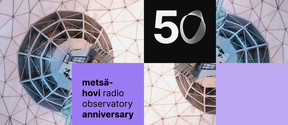Bringing human touch back to industrial settings – 5 things we should know about Industry 5.0

The global industrial landscape is undergoing a profound transformation as the fifth industrial revolution, Industry 5.0, is shifting our focus from an economic, automated and data-driven approach to social value, sustainability and well-being.
Doctoral researcher Xinyi Tu from Aalto University has studied the Industry 5.0 evolution towards a more interactive, immersive manufacturing experience by leveraging the industrial metaverse, that is blending the physical and digital worlds – and two enabling technologies: digital twins and Extended Reality, XR.
-
Industry 5.0 brings human ingenuity and creativity back into advanced technological environments. This shift aims to create more personalized, sustainable, and resilient production environments that align with human values and societal goals. In practice, better human-machine collaboration enhances for example the capability to create tailored products and to optimize energy use in smart factories. By integrating human-centric approaches into the core of industrial processes, Industry 5.0 fosters environments where technology is not just a tool for efficiency but a collaborator in innovation, enhancing industries’ ability to adapt to unique challenges, innovate meaningfully, and ensure that technological advancements benefit society as a whole.
-
The industrial metaverse and the integration of digital twins and XR technologies is set to revolutionize industrial settings. Digital twins are virtual replicas of physical entities with real-time data linkage, enabling the examination, surveillance, and forecasting of intricate processes or systems. On the other hand, XR blends real and virtual environments, enabling immersive experiences for human users. Developing XR interfaces for digital twin-based systems enable more intuitive, real-time interactions between humans and machines. By creating a seamless integration of digital twins and XR, the industrial metaverse improves efficiency, safety, and decision-making. For example, factories can simulate operations virtually, reducing errors and downtime, while workers train in safe, virtual environments. Real-time and context-aware data visualization enhances quick, informed decision-making.
-
These technologies promote social good by aligning industry advancements with environmental and societal values. Integrating digital twins and XR within the industrial metaverse fosters a manufacturing landscape where technology serves to augment human capabilities, leading to smarter, more adaptable industrial operations. This means industries can develop sustainable production processes, reduce waste, and minimize their environmental footprint, contributing to the global effort against climate change. Furthermore, these technologies support the well-being and development of the workforce by empowering workers to take on more creative, strategic roles, leading to more fulfilling and meaningful employment opportunities.
-
The road to the Industry 5.0 transformation is fraught with complexities. Key challenges include integrating complex data from digital twins into intuitive and accessible interfaces, embedding XR seamlessly into industrial settings, and building an adaptable, interoperable, and scalable industrial metaverse. Creating innovative solutions to these challenges requires a deep understanding of the digital and physical aspects of the industry – which is at the core of Xinyi Tu’s research.
- Finland has a pioneering national metaverse strategy, which has brought the country to the forefront of metaverse development in Europe. As the first country in Europe to launch a Metaverse Initiative, Finland aims at creating a €30 billion industry by 2035, opening new business opportunities across various sectors: For instance, in healthcare sector, Metaverse could enable immersive telemedicine and virtual therapy, and in manufacturing, virtual factories could optimize production, training, and teleoperation. Additionally, the creative industry could also see growth in virtual content creation for fashion, gaming, and more, as brands establish their presence in the Metaverse. The initiative is focused on shaping the future of digital experiences: developing the Metaverse ethically and responsibly, prioritizing privacy, user safety, and considering the overall societal impact of Metaverse.
Additionally, with its Community of Practice (CoP 5.0) launched in 2023, the European Union is also committed to transforming traditional business models into more impactful, human-centered approaches, ensuring that Europe’s industrial future is both technologically advanced and socially responsible.
More information
Xinyi Tu’s public defense on her thesis Industrial Metaverse: Revolutionizing Industry 5.0 with Digital Twins and Extended Reality takes place 13th September 2024 at 12. More information about the event.

- Published:
- Updated:
Read more news

Raimo Kantola in Memoriam
Emeritus Professor Raimo Kantola focused in his last years as professor especially on 5G development and cyber security. He passed away unexpectedly at the age of 69 on 26 August 2024.
The Tähtitiistai lecture series brings the astronomy close to everyone's everyday life
The open lecture series will cover the study of restless black holes, Earth-sized telescopes and what the historic 50-year history of solar research can tell us about ourselves and our future on Earth. The lecture series is open to all and will take place online and in person in Otaniemi in autumn 2024. Welcome!
The weight of water – Finland is a powerhouse in water diplomacy
Experts explain how the scarcity of water impacts both global politics and the economy